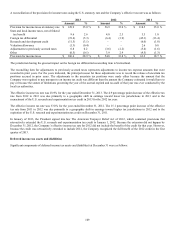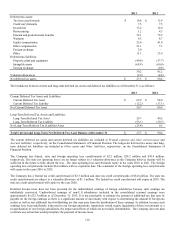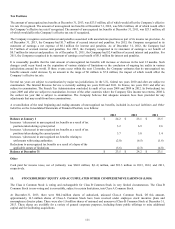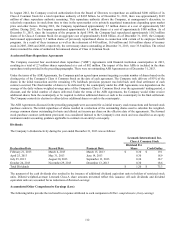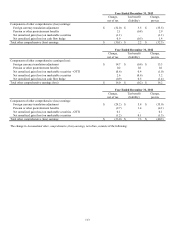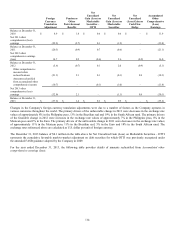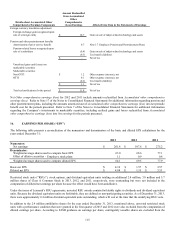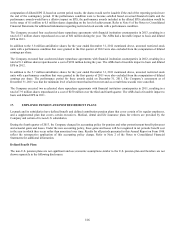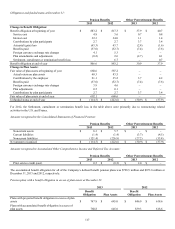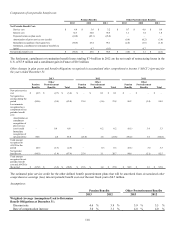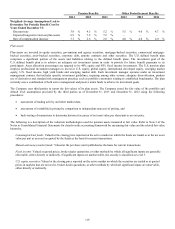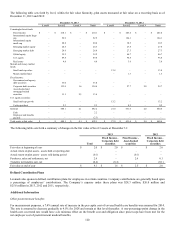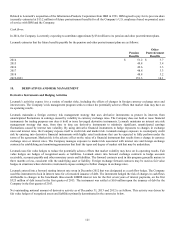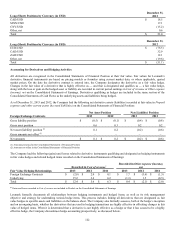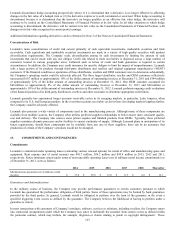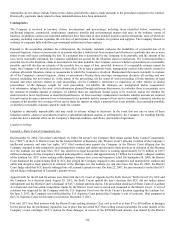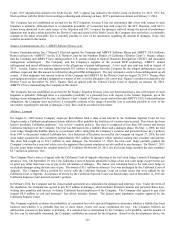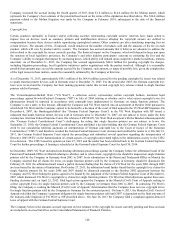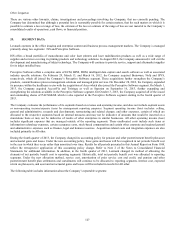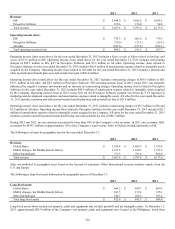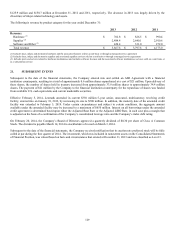Lexmark 2013 Annual Report Download - page 123
Download and view the complete annual report
Please find page 123 of the 2013 Lexmark annual report below. You can navigate through the pages in the report by either clicking on the pages listed below, or by using the keyword search tool below to find specific information within the annual report.
Pension Benefits Other Postretirement Benefits
2013 2012 2011 2013 2012 2011
Weighted-Average Assumptions Used to
Determine Net Periodic Benefit Cost for
Years Ended December 31:
Discount rate 3.9 % 4.5 % 5.2 % 3.5 % 4.0 % 4.7 %
Expected long-term return on plan assets 6.9 % 7.2 % 7.2 % – – –
Rate of compensation increase 3.1 % 2.6 % 2.6 % 4.0 % 4.0 % 4.0 %
Plan assets:
Plan assets are invested in equity securities, government and agency securities, mortgage-backed securities, commercial mortgage-
backed securities, asset-backed securities, corporate debt, annuity contracts and other securities. The U.S. defined benefit plan
comprises a significant portion of the assets and liabilities relating to the defined benefit plans. The investment goal of the
U.S. defined benefit plan is to achieve an adequate net investment return in order to provide for future benefit payments to its
participants. Asset allocation percentages are targeted to be 40% equity and 60% fixed income investments. The U.S. pension plan
employs professional investment managers to invest in U.S. equity, global equity, international developed equity, emerging market
equity, U.S. fixed income, high yield bonds and emerging market debt. Each investment manager operates under an investment
management contract that includes specific investment guidelines, requiring among other actions, adequate diversification, prudent
use of derivatives and standard risk management practices such as portfolio constraints relating to established benchmarks. The plan
currently uses a combination of both active management and passive index funds to achieve its investment goals.
The Company uses third parties to report the fair values of its plan assets. The Company tested the fair value of the portfolio and
default level assumptions provided by the third parties as of December 31, 2013 and December 31, 2012 using the following
procedures:
assessment of trading activity and other market data,
assessment of variability in pricing by comparison to independent source(s) of pricing, and
back-testing of transactions to determine historical accuracy of net asset value per share/unit as an exit price.
The following is a description of the valuation methodologies used for pension assets measured at fair value. Refer to Note 3 of the
Notes to Consolidated Financial Statements for details on the accounting framework for measuring fair value and the related fair value
hierarchy.
Commingled trust funds: Valued at the closing price reported on the active market on which the funds are traded or at the net asset
value per unit at year end as quoted by the funds as the basis for current transactions.
Mutual and money market funds: Valued at the per share (unit) published as the basis for current transactions.
Fixed income: Valued at quoted prices, broker dealer quotations, or other methods by which all significant inputs are generally
observable, either directly or indirectly. If significant inputs are unobservable, the security is classified as Level 3.
U.S. equity securities: Valued at the closing price reported on the active market on which the securities are traded or at quoted
prices in markets that are not active, broker dealer quotations, or other methods by which all significant inputs are observable,
either directly or indirectly.
119


